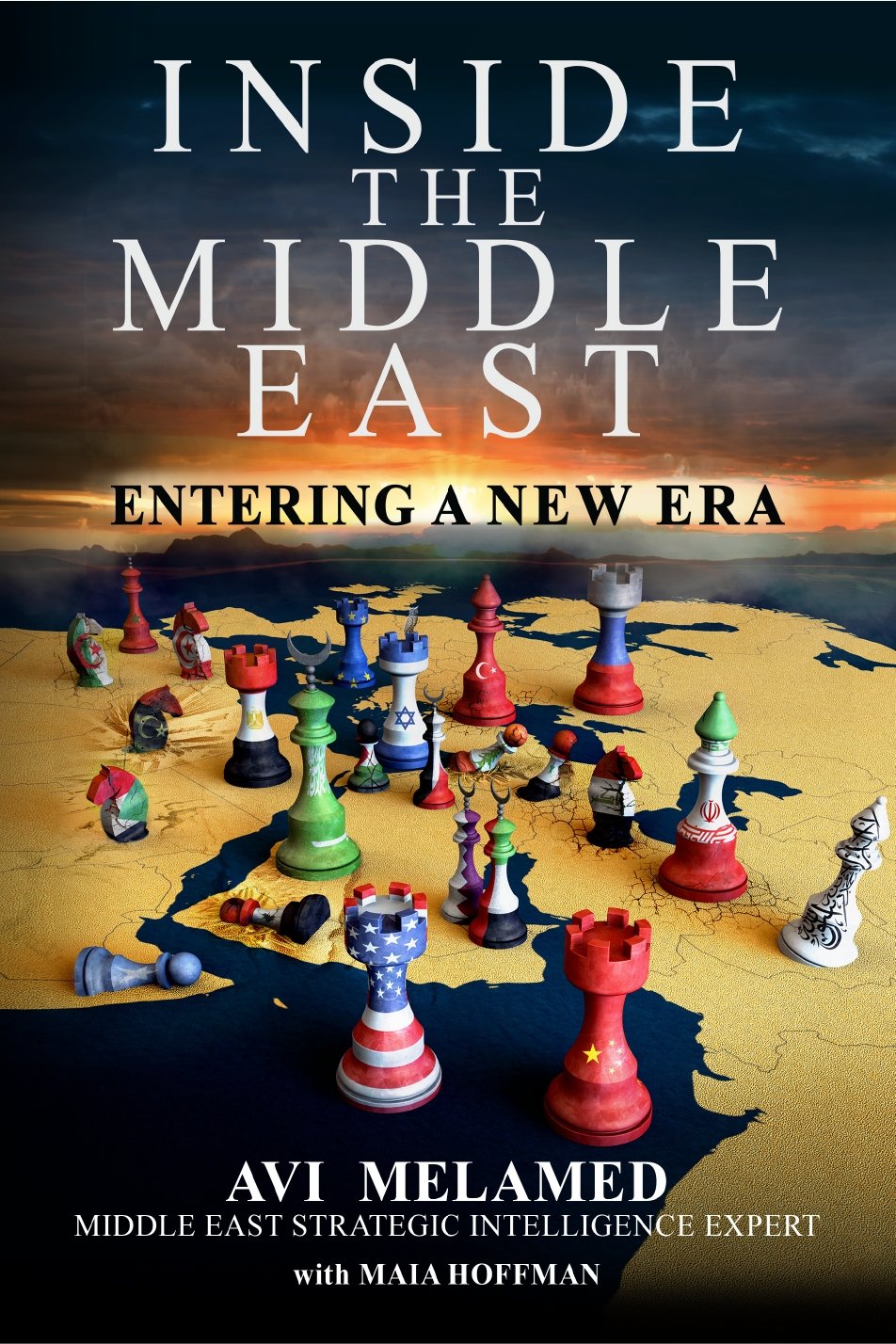|
Getting your Trinity Audio player ready...
|
Iranian Retaliation: A Prelude to A Diplomatic Process?
Iranian Retaliation: A Prelude to A Diplomatic Process? | This article is being written just hours after Iran launched a missile attack (January 8) against two military bases in Iraq. The targets were the Ein al-Assad base in western Iraq and the Harir base located some 70 miles west of the Iran-Iraq border. These bases host United States Forces, as well as International Coalition Forces that are fighting ISIS in Iraq. Iranian TV reported that 80 American soldiers were killed in the attack. However, according to accumulating information I have gathered as of 4:00 pm Israel time on Wednesday, January 8th, it appears that there was minor structural damage and no American casualties. Apparently, an unknown number of Iraqis were killed and or injured.
The Iranian Revolutionary Guards (IRG) claimed responsibility for the operation as revenge for the killing of Major General Qassem Soleimani, the Commander of Al-Quds force by the United States on January 3, 2020.
Iran’s leader Ali Khamenei declared the attack a success.
The IRG’s Response Contains Four Messages:
If the US retaliates, Iran will reciprocate with a tougher response.
Any country that serves as the base for a US attack on Iran will be a target of the regime.
Iran considers Israel connected to Soleimani’s assassination. (The Iranian News Agency “Tasnim” quoted an anonymous source threatening that Iran will attack Israel if the US retaliates).
The American people should put pressure on the Trump administration to withdraw US forces from the region to avoid the loss of US soldiers’ lives.
What Can We Learn from the Iranian Military Response and the Accompanying Iranian Rhetoric?
In my January 3rd article, The Killing of Major General Qassem Soleimani | Initial Observations I outlined that the Mullah regime’s ability to use their agents or proxies to retaliate is limited. Hezbollah in Lebanon, Islamic Jihad and Hamas in the Gaza Strip, as well as the Iranian-backed Iraqi militias (Al Hashd Al Sha’abi and others) are engaged in their domestic political challenges. Specifically, the ongoing protests in those countries which to a large extent are aimed at limiting or eradicating Iranian influence in those areas. Given that, it is not surprising that the Iranians themselves (as opposed to one of their agents or proxies – which is their usual modus operandi, leaving Teheran’s hands clean) launched a direct attack against a US military installation. Nor is it surprising that Iraq was the target of the attack. This was part of my analysis on January 3rd and I anticipate Iraq to continue to be an active arena.
It is not an accident that the damage was minor. On September 14, 2019, the Iranian regime attacked the Aramco facilities in Saudi Arabia. That demonstrated the Iranian’s ability to hit targets with the highest precision.
Therefore, in my estimation, Iran’s primary consideration was to launch an attack but to avoid American casualties. This consideration proves that the Iranian regime has internalized the fact that US President Trump will respond militarily when red lines are crossed, and that the US has the fortitude and the capacity to cause severe damage.
The Conclusion is Clear and Simple:
The main interest of the Mullah regime is to survive. To that end, the Iranian regime maintains a highly balanced and well-considered system of cost and benefit considerations. The Mullah regime gladly and generously sacrifices others – not themselves.
In my previous article, I wrote that one of the things that died with Soleimani was Iran’s deterrence posture.
The “wall of fear” was a core element of the regime’s image and its foreign policy, fueling Iran’s self-confidence that it was immune to direct harm. That confidence was boosted following the signing of the JCPOA (July 2015).
After signing the JCPOA, the Mullah regime escalated its aggressive expansion throughout the region, to the point Iran openly bragged it controls four Arab state capitals – Beirut, Damascus, Baghdad, and Sana’a. Following the withdrawal of Trump administration from the JCPOA (May 2018) and the imposing of US crippling sanctions on Iran’s economy, the Mullah regime continued to escalate its aggressive actions. The absence of a response to Iran’s attacks on oil tankers in the Gulf in May and June 2019 once again boosted Teheran’s aggression and self-confidence. And in September 2019, when Iran directly attacked Saudi Arabia’s oil facilities, and there was no retaliation, their self-confidence and belief that they were immune to retaliation was even further bolstered.
Iran’s response to the killing of Soleimani – both the military response itself and the rhetoric surrounding the attack – indicates that Iran is having difficulty restoring the deterrence equation, which served the regime very well before the killing of Soleimani on January 3rd.
The Recent US-Iran “back and forth exchange” has changed the deterrence equation in the Middle East. And the change – for now, does not benefit Iran.
Some in the West argue that the killing of Soleimani boosts instability and is leading to an escalation. Others even describe the killing of Soleimani as “bordering on war crimes.” Those sentiments distort the reality and fail to understand the potential, albeit counter-intuitive expected consequences to the killing of Soleimani:
First and foremost, as I said on January 3rd – the elimination of Soleimani is not the reason for the escalation – but rather the result of years of a bloody escalation generate by Iran. And Soleimani was personally responsible for this escalation.
Second, the change in the deterrence balance to the detriment of Iran as a result of the elimination of Soleimani offers the potential to stabilize – not escalate -the situation in the Middle East because it opens the door to a diplomatic process.
Current Assesment
For now, the US President’s risk in eliminating Soleimani seems to have been a well-calculated step that has proved, as of now, to be bear positive outcomes in three respects:
It created a real deterrent to the Iranian regime
It restores the status and image of the US as a powerful force whose interests are not to be ignored
It may open the door to a diplomatic process
And one last reflection: Appeasing a thug – even in the name of noble values – rarely produces positive results.
***
Some Observations made today (January 8, 2020) by Arab columnists:
Dr. Abdel Aziz Abu Hamad Aluwaisheg, @abuhamad1, the Assistant Secretary-General for Foreign Affairs at the Gulf Cooperation Council, writes in his article “Will the Killing of Soleimani Increases the Odds for Negotiations with Iran“: “….The US has proven in the last days it has the courage to directly confront Iran militarily”.
Saudi columnist, Mashari Al-Thydi (@MAlthaydy) writes in his article “How Can Any Reasonable Mind Contest the Killing of Soleimani?”: “….In contrast to those who portray Soleimani as a noble person, are the tears and grievances of millions of Arabs who deserve to take their revenge on Soleimani and his gang militias in Lebanon, Syria, Iraq, Yemen, and the Gulf area.”
Syrian columnist (based in Switzerland) Ghassan al-Mufleh https://www.arab-reform.net/people/ghassan-al-mufleh/ writes in his article “Iran and the Criminal Stability“: …..Unless they want to shield Iran and its expansionist vision, we demand (European) states to explain what do they mean by “regional stability”? Do they mean the continuing Russian – Iranian – Assad crimes in Idlib is regional stability? Do they mean the slaughter of Iraqi protesters by Iranian-backed Iraqi militias is regional stability? Do they mean providing the Houthis with Iranian missiles to attack Saud Arabia is regional stability? Do they mean the occupation of Lebanon by Iran’s thug Hezbollah is regional stability? It seems what they really want is to perpetuate the Iranian model of criminal stability at the expense of the Arab people.”
If you want to have a better understanding of the news and what really drives the unfolding events…
Read the latest book of Avi Melamed,
INSIDE THE MIDDLE EAST | ENTERING A NEW ERA, available now >>>
Follow me on Twitter @AviMelamed; Facebook @InsideTheMiddleEast; for more Videos on YouTube https://www.youtube.com/c/AviMelamed
I can always be reached at Av*@********ed.com































































